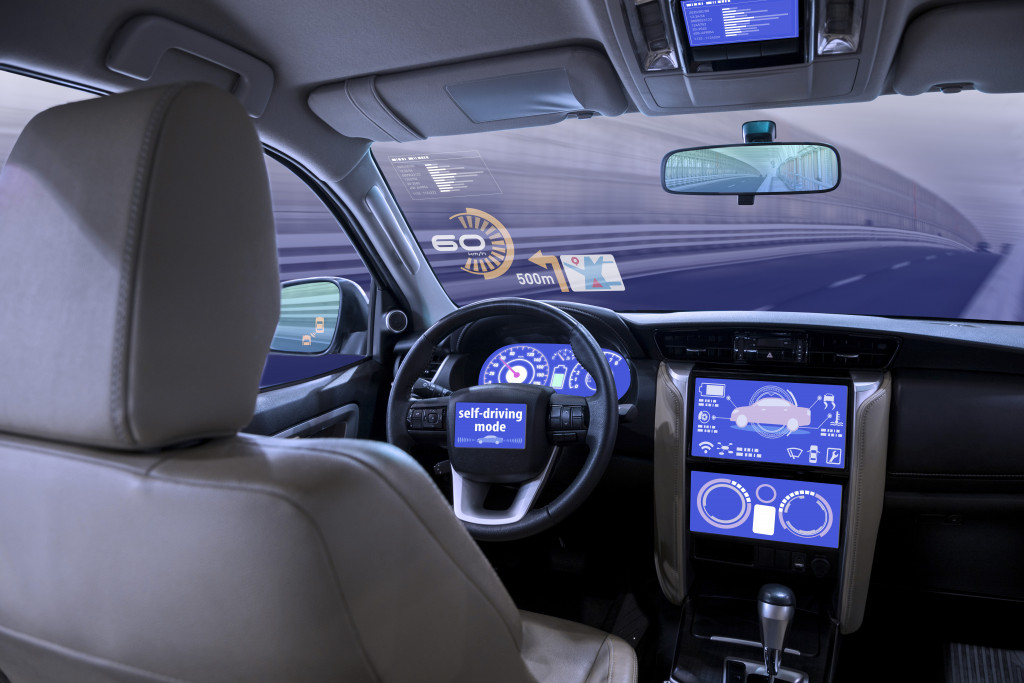Self-driving cars offer a number of potential benefits, from reducing traffic congestion and pollution to making roads safer. However, there are also some challenges that need to be addressed before they can become widely adopted.
This post will explore the benefits and challenges of self-driving cars in more detail.
How Self-Driving Cars Work
The vast majority of self-driving cars currently in development are based on existing production vehicles. These include both electric and ordinary internal combustion engine (ICE) models. A few fully autonomous cars, however, do exist without steering wheels or pedals. For the sake of this discussion, we will focus on the more traditional models.
Tesla is ahead of the game in this area, having already released an over-the-air software update (version 7.0) with self-driving capabilities for its Model S electric car. The improved autopilot feature uses a combination of cameras, radar sensors, ultrasonic sensors, and data to automatically steer down the highway, change lanes, and adjust speed in response to traffic.
The system is not perfect, however. In May 2016, a Tesla owner was killed while using autopilot when his car failed to detect a large tractor-trailer against a brightly lit sky.
Now that the technology has advanced so far, major automotive manufacturers are joining Tesla in bringing autonomous vehicles to the roads. Nissan has already extended its collaboration with NASA to develop an autonomous car. Meanwhile, GM has announced that it will sell autonomous vehicles by the middle of the decade.
The Benefits of Self-Driving Cars
Autonomous vehicles could end traffic accidents as we know them, significantly reducing the more than one million deaths that occur on global roads each year. In a 2016 TEDTalk, Chris Urmson from Google said that self-driving cars have the potential to cut worldwide accident rates by up to 90 percent. This is because most road accidents are due to human error.
Self-driving cars could reduce traffic congestion significantly as they can “platoon” – or travel close together at constant speeds. This would allow twice as many vehicles to fit on the same number of roads, reducing wasted time and fuel.
An even more significant benefit is the reduction of emissions from cars stuck in gridlock or bumper-to-bumper traffic. Self-driving cars don’t lose patience and switch lanes endlessly while looking for the quickest route. Instead, they look for an optimal route that considers all stoplights and speed limits.

Uber is already planning to use self-driving vehicles, which it expects will eventually make its service both cheaper and more efficient – in other words, more profitable for the company.
Using these vehicles can also reduce the number of Ubers on the road, lower their wait times, and ultimately expand their customer base. This will be especially beneficial in large cities where finding a nearby driver can sometimes take several minutes.
Challenges to Overcome Before Adoption Can Begin in Full Force
Despite the benefits of self-driving cars, the adoption is slow for many reasons. Perhaps the greatest challenge is that these cars are still largely unproven.
Tesla’s autopilot software is the most advanced of the current crop, but it still lacks many features necessary to give full control to an autonomous car. Other automakers have similarly released partial self-driving features.
The cost of research and development is also staggering. Google, for example, has invested more than $1 billion in its self-driving research. Not everyone, therefore, has the capability to adopt the tech immediately, so the waiting time before it becomes mainstream is long.
Another important consideration is the refinement of regulations to allow these cars on the road. Some experts believe that laws are already outdated and inhibit the adoption of self-driving cars.
To run these vehicles, they need to rely on a stable network like 5G. However, the rollout of 5G is still in its infancy. What’s more, although this is significantly better than 4G, it is not immune to interference, making Baw filter technology critical.
Another challenge is consumer trust. Some surveys show that the public is not yet ready to get into a car without a steering wheel or pedals. Others may be concerned about the technology’s safety – understandably so.
Finally, self-driving cars won’t solve every problem. For example, they cannot change lanes when there is an accident or road blockage ahead.
They may also lack an adequate system for detecting and avoiding pedestrians and cyclists, who may not be as predictable as other vehicles, accurately. There have been some accidents involving self-driving cars hitting pedestrians.
Still, many experts feel positive about the future of autonomous cars and believe that many problems can be solved through better programming and technological updates.

